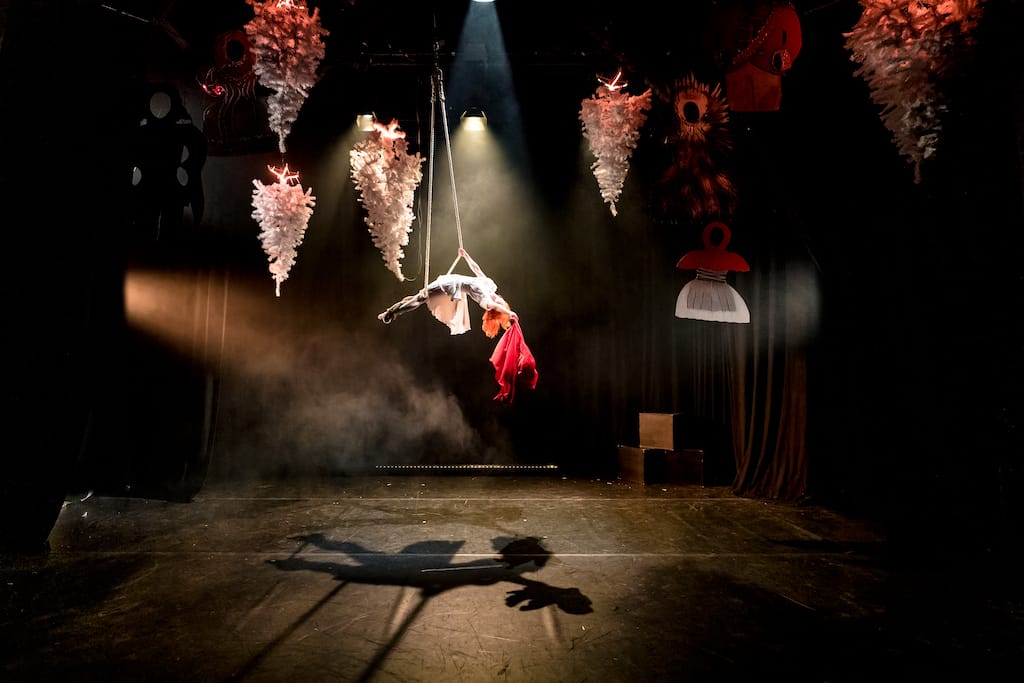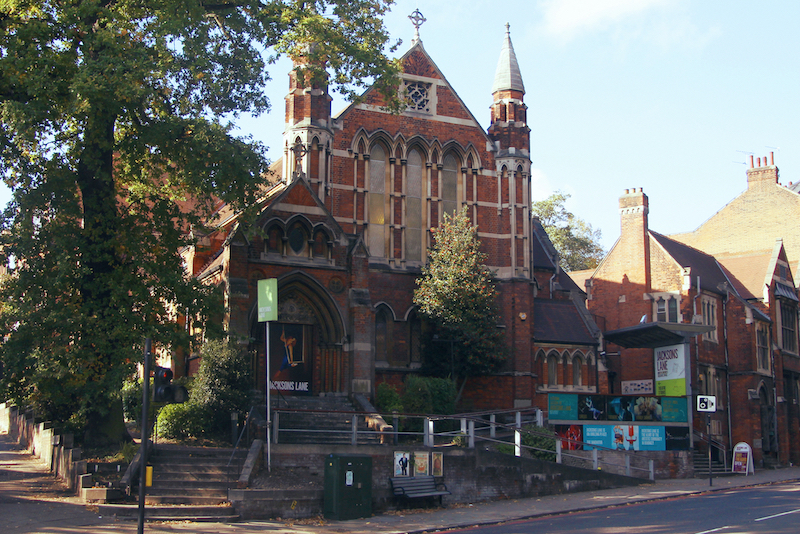Resilience and Renewal: The Jacksons Lane Arts Centre

In January 2020, the gorgeous façade of Jacksons Lane Art Centre was faced with a completely overturned reality on the inside. As severe winter flooding across the U.K., and an exploding boiler that bled hot brown liquid down the office walls painted a grim picture, a sold-out edition of the London International Mime Festival was unfolding adjacent to the mayhem.
Another stormy afternoon in 2006 had left behind sore memories. An indistinct patter on the ceiling—slowly getting louder—turned into chunks of stone crashing down through the roof. The building had to be evacuated.
“When the pandemic struck, it seemed like the end was near,” Adrian Berry, Artistic Director of Jacksons Lane, tells us. But the arts centre, housed in a converted Methodist church in North London, has had a history of resilience.

Jacksons Lane, a multi-arts centre and among the U.K.’s leading circus venues, has served as a creative and cultural hub for nearly five decades. Boasting a charming theatre with a seating capacity of 170, five studio spaces and a café and bar, the venue is known for its innovative work in experimental visual theatre and contemporary circus.
For many who have known only a traditional circus set-up, Jacksons Lane’s work is a breath of fresh air. While elements of traditional circus like clowning, juggling, acrobatics and trapeze acts still prevail, the idea is to use them in ways not imagined before. The current programme infuses ballet, cabaret, drama, technology, stand-up and more with traditional circus acts to craft unique productions.
The building first opened in 1905 as the Highgate Wesleyan Methodist Church. The church was closed in the 1970s and the building remained unoccupied for a few years. All artistic movements are intrinsically citizens’ crusades. Jacksons Lane’s emergence as a cultural hub, too, was a community effort. A group of residents and campaigners shared a vision for the space as a nucleus for the local artistes. It was once again made open to the public in 1975, run entirely by a devoted team of volunteers determined to create something special. Even when plans were afoot to widen the Archway Road that would result in a range of buildings—including Jacksons Lane—being knocked down, activists campaigned and succeeded in saving them from being bulldozed.
“I am not sure why I went for a much lower-paying job at a struggling arts centre when I joined in 2006. The place draws you in. But it was failing. I wanted it to stand for something and have a unique voice,” Berry explains. Fifteen years on, it is synonymous with contemporary circus, not only churning new productions but also sustaining sundry educational and outreach initiatives, including a youth circus programme.
Jacksons Lane turned the pandemic, which first looked like an inevitable doom, into a quiet metamorphosis within its walls. Before closing their doors, they used contingency funding to give 100 circus artistes two months of free space to train, rehearse and develop new work. It was followed by a massive redevelopment project to transform the venue with the key objective of greater accessibility, as well as more spaces for workshops, classes and recreation. A film titled Encore was produced, shot entirely on campus. Circus artistes hanging around on scaffolding and the roof was a site to behold. Through the film, the centre was able to employ nearly 20 artistes—the first project the artistes had received in a year. “It was our responsibility to reopen and to be an even better home for circus. So, we ensured we would give more residencies, more support, more time, and help them get the funding,” asserts Berry.
The relationship between the arts and funds is mostly symbiotic but always undeniable. Historically, patronage has been vital to the survival of all art forms. To balance the economics of the arts requires its own kind of artistry. Can a house of performing arts then be truly self-sufficient? Perhaps it is an objective that is redundant today. “If we lost our funding, Jacksons Lane could still exist, but it could not be doing anything interesting artistically. We would exist simply because we have spaces to rent out. We wouldn’t put up the kind of work that we do now. I wouldn’t be here now,” Berry propounds.
Jacksons Lane is a testament that art centres are not merely a stage for performances but a source of cultural rejuvenation for the city. They can be radical, often becoming the backbone of the local community. Among all the inspiring work under its belt, Jacksons Lane is also fondly looked upon as among the friendliest venues in the city. “Artistes are faced with rejection a lot. There are too many ways of saying no but we try to find different ways of saying yes,” Berry tells us with a smile.
Every Christmas day, for 47 years now, Jacksons Lane opens its doorways to about 300 older and disabled people, who would otherwise be alone. Artistes from Cirque du Soleil performed on one such Christmas evening, embracing the festive season.
Even when structures crumble and time seems to freeze, places like Jacksons Lane espouse hope. They do more than just put up a show.
By Aishwarya Bodke. This piece was originally published by the National Centre for the Performing Arts, Mumbai, in the July 2023 issue of ON Stage – their monthly arts magazine.





